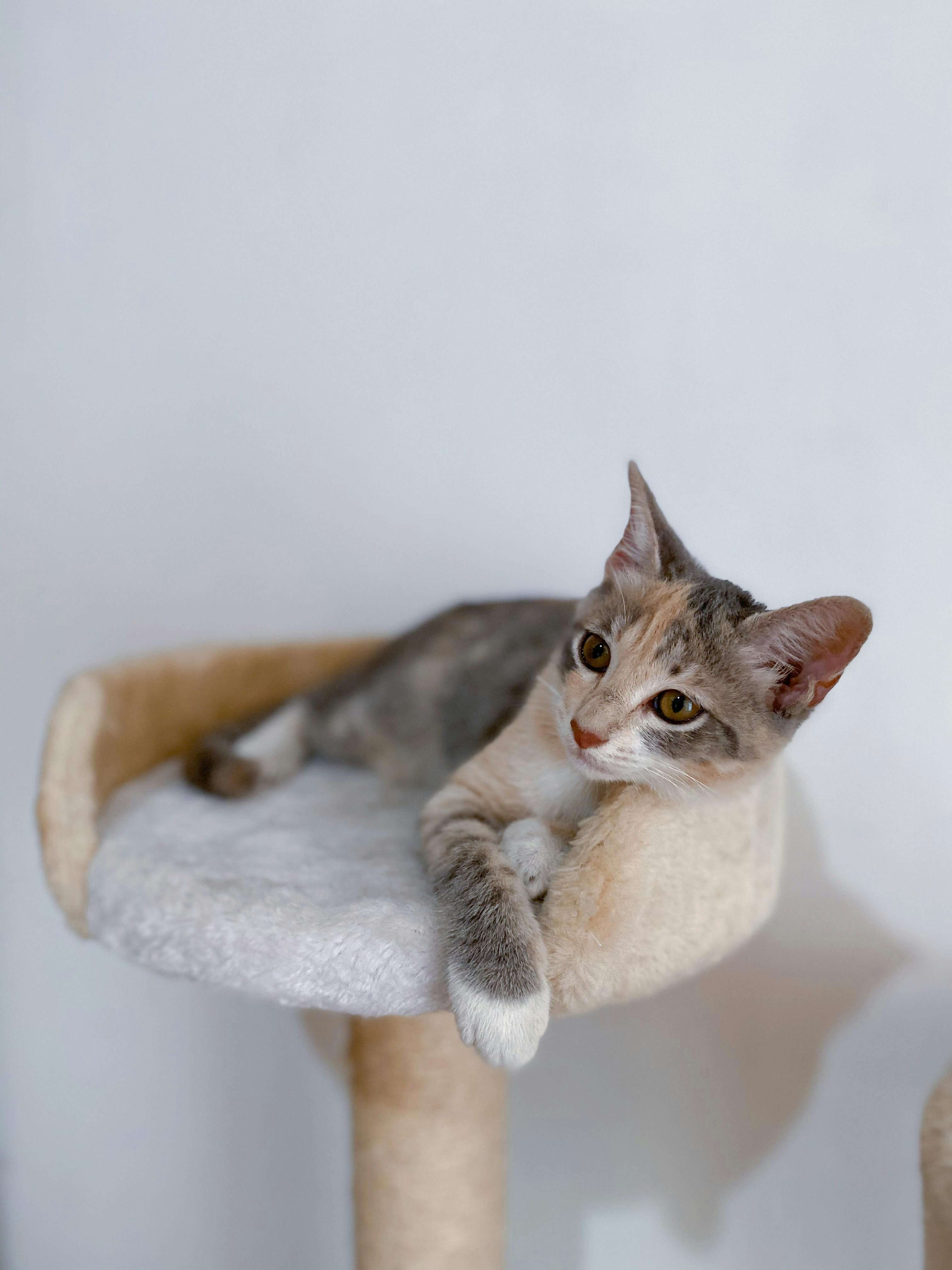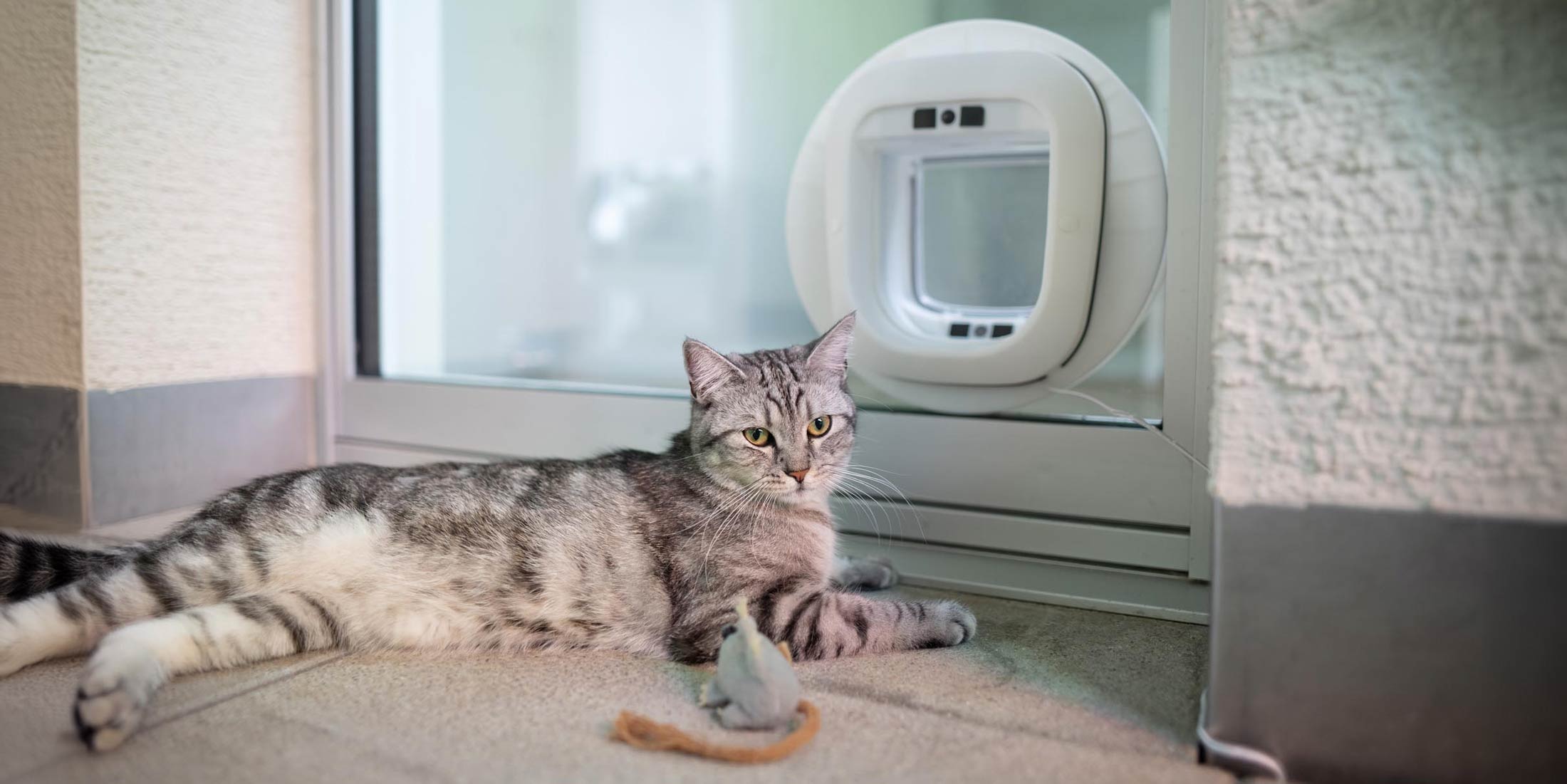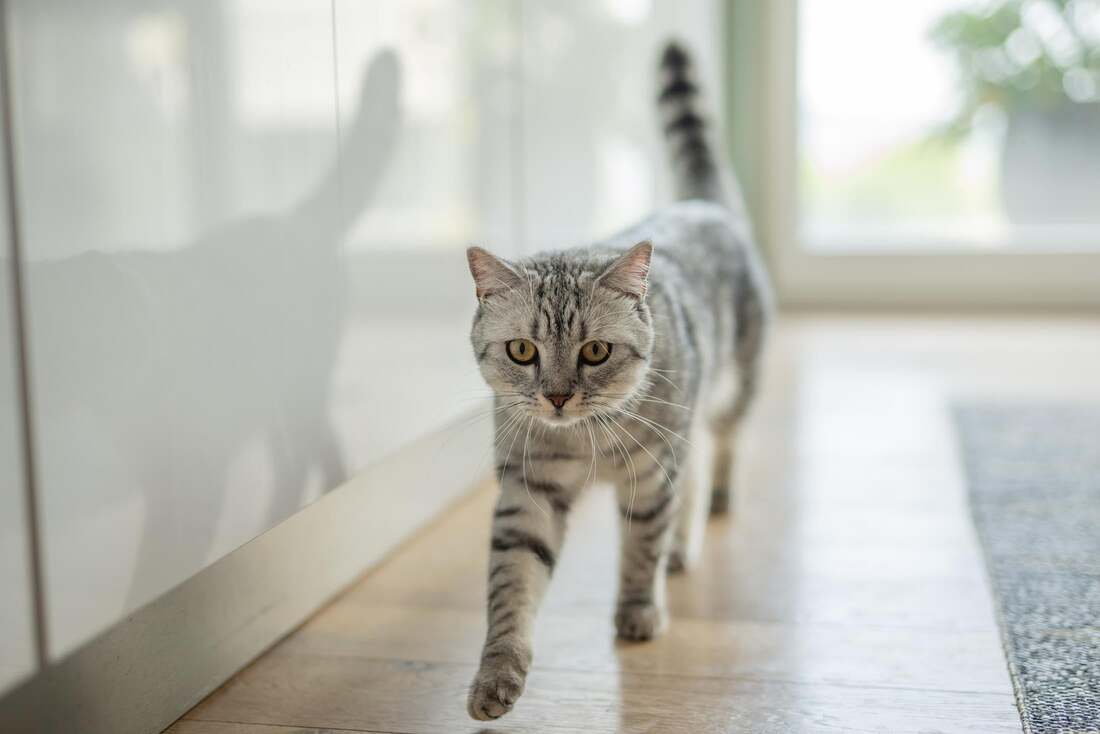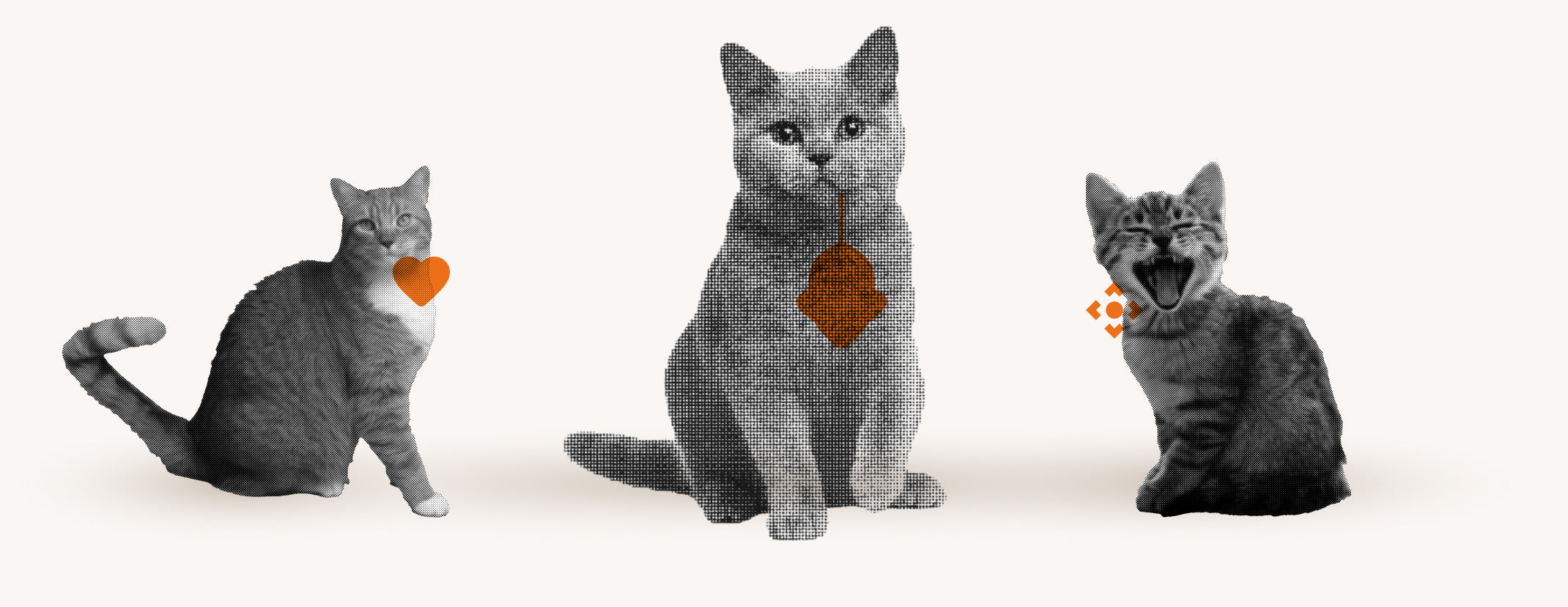FIP in cats – a name that causes fear and concern in many cat owners.
The diagnosis of this disease often brings with it a grim prognosis, and many wonder how long their beloved cat can live.
Unfortunately, the average life expectancy of a cat with acute FIP is only about nine days, and only five percent of affected cats live longer than a year.
In this blog post, you will learn more about the transmission, symptoms, diagnosis and treatment options for FIP, as well as preventive measures that can minimize the risk of infection.
Transmission of FIP in cats: What you need to know

Feline Infectious Peritonitis, or FIP for short, is a dreaded disease in cats caused by the feline coronavirus. This disease is mainly transmitted through direct contact between cats, for example through mutual grooming or sharing food bowls and litter boxes. It is important to understand that the virus can also be transmitted through indirect contact via contaminated objects such as toys and grooming equipment, which allows infection even without direct contact between cats.
In addition to direct and indirect contact, the fecal-oral route also plays a role in the transmission of FIP. The virus can be transmitted through contact with infected feces, which can be particularly problematic in multi-cat households or animal shelters. Droplet infection through sneezing or coughing is also possible, but less common. To minimize the risk of transmission, good hygiene is essential, including regular cleaning and disinfection of the environment in which the cats live.
Prevention of FIP: Effective Risk Reduction Measures

There are several effective measures that every cat owner can take to minimize the risk of FIP infection. These include avoiding overcrowding , especially in multi-cat households and animal shelters, as confined spaces increase the risk of virus transmission. It is also important to provide each cat with its own litter box and to clean and disinfect it regularly. In addition, water and food bowls should always be kept clean and regularly disinfected, ideally with a diluted bleach solution.
In addition to hygiene measures , reducing stress can also help reduce the risk of FIP infection. Stress can weaken cats' immune systems, making them more susceptible to infections. To minimize stress, create a pleasant and enriching environment, for example by providing puzzle toys and perches for cats. These measures help promote cats' well-being and strengthen their immune systems, which in turn can reduce the risk of FIP infection.
Symptoms of FIP in cats: early detection is crucial
Feline Infectious Peritonitis (FIP) is a serious disease in cats caused by the feline coronavirus. Symptoms can vary widely and often depend on the form of FIP - the "wet" or "dry" form. The most common signs include:
- persistent fever
- loss of appetite
- weight loss
- lethargy
These symptoms are particularly alarming because they can also occur in other diseases, making early detection difficult.
In the wet form of FIP, fluid accumulation in the abdomen can also occur, leading to a swollen abdomen. In the dry form, inflammatory nodules can form in organs such as the liver, kidneys or brain, which can lead to a variety of problems. Other symptoms can include:
- jaundice
- breathing difficulties
- neurological deficits such as convulsions or paralysis
It is crucial that cat owners act quickly at the first sign of these symptoms and seek veterinary attention to ensure the best possible chance of successful treatment.
Diagnosis of FIP: Modern Procedures and Their Significance

Diagnosing FIP is complex because symptoms are often non-specific and can be confused with other diseases. Modern diagnostic procedures such as blood tests and ultrasound scans are crucial for an accurate diagnosis. Blood tests can help identify inflammatory markers, abnormalities in blood counts and the presence of coronavirus antibodies. However, these tests are not always conclusive because they can show similar results in other diseases as well.
Ultrasound scans provide a valuable imaging modality to assess fluid collections and tissue changes in real time. This is particularly helpful in identifying the wet form of FIP, where fluid accumulates in the abdominal cavity. The combination of these diagnostic methods allows veterinarians to make an informed diagnosis and develop appropriate treatment plans. It is important that cat owners act quickly when FIP is suspected and take advantage of these modern diagnostic options.
Treatment of FIP in cats: options and prospects for success
The treatment of FIP in cats has made significant progress in recent years, particularly with the development of new antiviral drugs. One example is GS-441524, a drug that inhibits viral growth and has shown impressive cure rates in studies. However, this drug is not yet officially approved in many countries, which limits its availability. However, cat owners who have access to this drug report significant improvement in their cats' health, often within just a few weeks.
In addition to antiviral medications, supportive therapy is also an important part of the treatment of FIP. This includes:
- Anti-inflammatory medications such as corticosteroids, which help relieve symptoms such as fever and inflammation.
- Painkillers to improve the cat's comfort during treatment.
- Nutritional support to ensure that the cat receives sufficient nutrients even when appetite is lost.
This combined approach can help improve the cat's quality of life during treatment and increase the survival rate.
Vaccination against FIP: Progress and Recommendations
Despite the challenges in developing an effective vaccine against FIP, progress is being made in this field. The vaccines available aim to protect the cat from infection with the feline coronaviruses that can mutate to cause feline infectious peritonitis. Vaccination can reduce the risk of severe disease, but cannot completely eliminate it, as the virus is known to mutate. It is important that cat owners are aware of these limitations when considering vaccination.
The decision to vaccinate against FIP should always be made in consultation with a veterinarian who can assess the cat's individual situation and the risk of infection. Recommendations usually include:
- A risk assessment, especially for cats in multi-cat households or with frequent contact with other cats.
- Monitoring the cat's health after vaccination to detect possible side effects in a timely manner.
These measures will help you make an informed decision about vaccination and protect your cat’s health in the best possible way.
Protect your cat with Flappie: A smart solution for your home
Imagine if you could not only make your cat's life safer, but also make your home cleaner and less stressful. That's exactly what the Flappie smart cat flap allows you to do. The innovative selective access control technology prevents your cat from bringing prey such as mice or birds into the house. This not only protects the local wildlife, but also ensures that you are not unexpectedly confronted with your cat's "gifts". The advantages of this technology are clear:
- No more unwanted surprises when your cat comes home.
- A clean and hygienic environment in your home.
- Less stress for you and your cat as access is controlled.
The Flappie cat flap is more than just a door for your cat. It is equipped with a camera and AI technology that makes it possible to detect whether your cat comes home alone or with prey. The Flappie app informs you immediately and allows you to react accordingly. You have the option to adjust and control the cat flap settings at any time, giving you a new level of convenience and monitoring. Here are some of the features you can use:
- Instant notifications via the Flappie app when your cat tries to come home with prey.
- Remote control of the cat flap so that you can stay in control even when you are on the go.
- Insight into your cat's behavior through videos and statistics directly on your smartphone.
If you want to learn more about this smart solution, visit flappie.ch and discover how you can improve your cat's well-being and the cleanliness of your home.
Frequently Asked Questions
How long will my cat live with FIP?
Unfortunately, the average life expectancy of a cat with acute FIP is only about nine days, and only five percent of affected cats live longer than a year.
Are FIP and FIV the same?
FIP and FIV are not the same thing. FIP stands for Feline Infectious Peritonitis and is caused by the feline coronavirus. FIV stands for Feline Immunodeficiency Virus, often referred to as feline AIDS. Both are serious illnesses, but they are caused by different viruses and have different effects on the cat's health.





Share:
Effective home remedies for colds in cats
Effective home remedies for bad breath in cats